Study on Clustering of Free-Floating Bike-Sharing Parking Time Series in Beijing Subway Stations
Abstract
:1. Introduction
2. Literature Review
2.1. Study on Bike-Sharing and FFBS
2.2. Study on Time Series Clustering
3. Methodology
4. Data Collection and Analysis
4.1. Data Acquisition
4.2. Time Series Preprocessing
4.3. Time Series Analysis and Clustering
4.4. Cluster Result Analysis
5. FFBS Parking Monitoring
6. Conclusions
Author Contributions
Funding
Conflicts of Interest
References
- Heinen, E.; Maat, K.; Wee, B.V. The role of attitudes toward characteristics of bicycle commuting on the choice to cycle to work over various distances. Transp. Res. D Transp. Environ. 2011, 16, 102–109. [Google Scholar] [CrossRef]
- Chen, M.; Wang, D.; Sun, Y.; Waygood, E.O.D.; Yang, W. A comparison of users’ characteristics between station-based bikesharing system and free-floating bikesharing system: Case study in Hangzhou, China. Transportation 2018, 45, 1–16. [Google Scholar] [CrossRef]
- Yan, X.; Handy, S.L.; Mokhtarian, P.L. Factors associated with proportions and miles of bicycling for transportation and recreation in six small US cities. Transp. Res. D Transp. Environ. 2010, 15, 73–81. [Google Scholar]
- Shaheen, S.; Christensen, M. Shared-Use Mobility Summit: Retrospective of North America’s First Gathering on Shared-Use Mobility; Transportation Sustainability Research Center: Richmond, CA, USA, 2014. [Google Scholar]
- Pal, A.; Zhang, Y. Free-floating bike sharing: Solving real-life large-scale static rebalancing problems. Transp. Res. Part C Emerg. Technol. 2017, 80, 92–116. [Google Scholar] [CrossRef]
- Wang, J.C.; Ouyang, S.S. Disequilibrium of bicycle-sharing in rail transit station areas in Beijing. J. Transp. Syst. Eng. Inf. Technol. 2019, 19, 214–221. [Google Scholar]
- Shaheen, S.; Guzman, S.; Zhang, H. Bikesharing in Europe, the Americas, and Asia. In Proceedings of the 89th Annual Meeting of the Transportation Research Board, Washington, DC, USA, 1 January 2010; pp. 159–167. [Google Scholar]
- Qiao, P.Y. Big Data on Cycling Jointly Released by Mobike and Beijing Evening News. 2017. Available online: http://www.xinhuanet.com//itown/2017-04/26/c_136237422.htm (accessed on 15 August 2019).
- Jiang, Q.; Ou, S.J.; Wei, W. Why shared bikes of free-floating systems were parked out of order? A preliminary study based on factor analysis. Sustainability 2019, 11, 3287. [Google Scholar] [CrossRef]
- Nikitas, A. Understanding bike-sharing acceptability and expected usage patterns in the context of a small city novel to the concept: A story of ‘Greek Drama’. Transp. Res. Part F Traffic 2018, 56, 306–321. [Google Scholar] [CrossRef]
- Nikitas, A.; Wallgren, P. The paradox of public acceptance of bike sharing in Gothenburg. Civ. Eng. Eng. Sustain. 2015, 169, 101–113. [Google Scholar] [CrossRef]
- Fishman, E.; Washington, S.; Haworth, N.; Watson, A. Factors influencing bike share membership: An analysis of Melbourne and Brisbane. Transp. Res. A Policy Pract. 2015, 71, 17–30. [Google Scholar] [CrossRef] [Green Version]
- Morton, C. Appraising the market for bicycle sharing schemes: Perceived service quality, satisfaction, and behavioural intention in London. Case Stud. Transp. Policy 2018, 6, 102–111. [Google Scholar] [CrossRef] [Green Version]
- Nikitas, A. How to save bike-sharing: An evidence-based survival toolkit for policy-makers and mobility providers. Sustainability 2019, 11, 3206. [Google Scholar] [CrossRef]
- Shi, J.G.; Si, H.; Wu, G.; Su, Y.; Lan, J. Critical factors to achieve dockless bike-sharing sustainability in china: A stakeholder-oriented network perspective. Sustainability 2018, 10, 2090. [Google Scholar] [CrossRef]
- Liu, Z.Y.; Shen, Y.Y.; Zhu, Y.M. Where will dock less shared bikes be stacked—Parking hotspots detection in a new city. In Proceedings of the 24th ACM SIGKDD International Conference on Knowledge Discovery & Data Mining, London, UK, 19–23 August 2018; pp. 566–575. [Google Scholar]
- Chang, P.; Wu, J.; Xu, Y.H.; Zhang, M.; Lu, X.Y. Bike sharing demand prediction using artificial immune system and artificial neural network. Methodol. Appl. 2019, 23, 613–626. [Google Scholar] [CrossRef]
- Luo, Y.J.; Dou, W.F.; Yan, H.; Liu, L.Y.; Lu, S.Y. An automated planning and scheduling method of shared bikes based on reward and punishment mechanism. In Proceedings of the 17th International Symposium on Distributed Computing and Applications for Business Engineering and Science, Wuxi, China, 19–23 October 2018; pp. 276–279. [Google Scholar]
- Wu, R.; Liu, S.; Shi, Z. Customer incentive rebalancing plan in free-float bike-sharing system with limited information. Sustainability 2019, 11, 3088. [Google Scholar] [CrossRef]
- Parkes, S.D.; Marsden, G.; Shaheen, S.A.; Cohen, A.P. Understanding the diffusion of public bike sharing systems: Evidence from Europe and North America. J. Transp. Geogr. 2013, 31, 94–103. [Google Scholar] [CrossRef]
- Dell’Amico, M.; Iori, M.; Novellani, S.; Subramanian, A. The bike sharing rebalancing problem with stochastic demands. Transp. Res. B Meth. 2018, 118, 362–380. [Google Scholar] [CrossRef]
- Zhang, Y.P.; Lin, D.; Mi, Z.F. Electric fence planning for dock less bike-sharing services. J. Clean. Prod. 2019, 206, 383–393. [Google Scholar] [CrossRef]
- Li, K.; Xiao, J.H. The design and implementation of sharing bicycle government regulation and service platform based on location service. GNSS World China 2018, 43, 73–76. [Google Scholar]
- Li, Y.; Zhu, Z.; Guo, X. Operating characteristics of dockless bike-sharing systems near metro stations: Case study in Nanjing city, China. Sustainability 2019, 11, 2256. [Google Scholar] [CrossRef]
- Sun, X. Analysis and application of the global characteristics cluster. Stat. Thinktank 2009, 114, 55–59. [Google Scholar]
- Esling, P.; Agon, C. Time-Series Data Mining. ACM Comput. Surv. 2012, 45, 12. [Google Scholar] [CrossRef]
- Ahn, J.; Lee, J. Clustering algorithm for time series with similar shapes. KSII Trans. Internet Inf. Syst. 2018, 12, 3112–3127. [Google Scholar]
- Aghabozorgi, S.; Shirkhorshidi, A.S.; Wah, T.Y. Time-series clustering—A decade review. Inf. Syst. 2015, 53, 16–38. [Google Scholar] [CrossRef]
- Esfahani, R.K.; Shahbazi, F.; Akbarzadeh, M. Three-phase classification of an uninterrupted traffic flow: A k-means clustering study. Transp. B Transp. Dyn. 2019, 7, 546–558. [Google Scholar] [CrossRef]
- Wang, J.C.; Wu, J.Y.; Ni, J.H.; Chen, J.; Xi, C.B. Relationship between urban road traffic characteristics and road grade based on a time series clustering model: A case study in Nanjing, China. Chin. Geogr. Sci. 2018, 28, 1048–1060. [Google Scholar] [CrossRef]
- Liao, T.W. Clustering of time series data—A survey. Pattern Recogn. 2005, 38, 1857–1874. [Google Scholar] [CrossRef]
- Košmelj, K.; Batagelj, V. Cross-sectional approach for clustering time varying data. J. Classif. 1990, 7, 99–109. [Google Scholar] [CrossRef]
- Agrawal, R.; Faloutsos, C.; Swami, A.N. Efficient similarity search in sequence databases. In Lecture Notes in Computer Science, Proceedings of the International Conference on Foundations of Data Organization and Algorithms, Chicago, IL, USA, 13–15 October 1993; Springer: Berlin/Heidelberg, Germany, 1993; Volume 46, pp. 69–84. [Google Scholar]
- Smyth, P. Clustering sequences with hidden Markov models. In Proceedings of the 10th Annual Conference on Neural Information Processing Systems (NIPS), Denver, CO, USA, 3–5 December 1996; pp. 648–654. [Google Scholar]
- Sakoe, H.; Chiba, S. A dynamic programming approach to continuous speech recognition. In Proceedings of the 7th International congress on acoustics, Budapest, Hungary, 18 August 1971; pp. 65–69. [Google Scholar]
- Sakoe, H.; Chiba, S. Dynamic programming algorithm optimization for spoken word recognition. IEEE Trans. Acoust. Speech Signal Process. 1978, 26, 43–49. [Google Scholar] [CrossRef]
- Faloutsos, C.; Ranganathan, M.; Manolopoulos, Y. Fast subsequence matching in time series databases. Sigmod. Record. 1994, 23, 419–429. [Google Scholar] [CrossRef]
- Cánovas, J.S.; Guillamón, A.; Ruiz-Abellón, M.C. Using permutations for hierarchical clustering of time series. Entropy 2019, 21, 306. [Google Scholar] [CrossRef]
- Yi, B.K.; Faloutsos, C. Fast time sequence indexing for arbitrary Lp norms. In Proceedings of the 26th International Conferenceon Very Large Data Bases, San Francisco, CA, USA, 10–14 September 2000; pp. 385–394. [Google Scholar]
- Vlachos, M.; Kollios, G.; Gunopulos, D. Discovering similar multidimension altrajectories. In Proceedings of the 18th International Conference on Data Engineering, San Jose, CA, USA, 26 February–1 March 2002; pp. 673–684. [Google Scholar]
- Li, H.L.; Liang, Y.; Wang, S.C. Review on dynamic time warping in time series data mining. Control Dec. 2019, 33, 1035–1353. [Google Scholar]
- Berndt, D.; Clifford, J. Using dynamic tune warping to find patterns in sequences working notes of the knowledge discovery in databases workshop. Knowl. Inf. Syst. 1994, 35, 9–370. [Google Scholar]
- Fishman, E.; Washington, S.; Haworth, N. Bike share: A synthesis of the literature. Transp. Rev. 2013, 33, 148–165. [Google Scholar] [CrossRef]







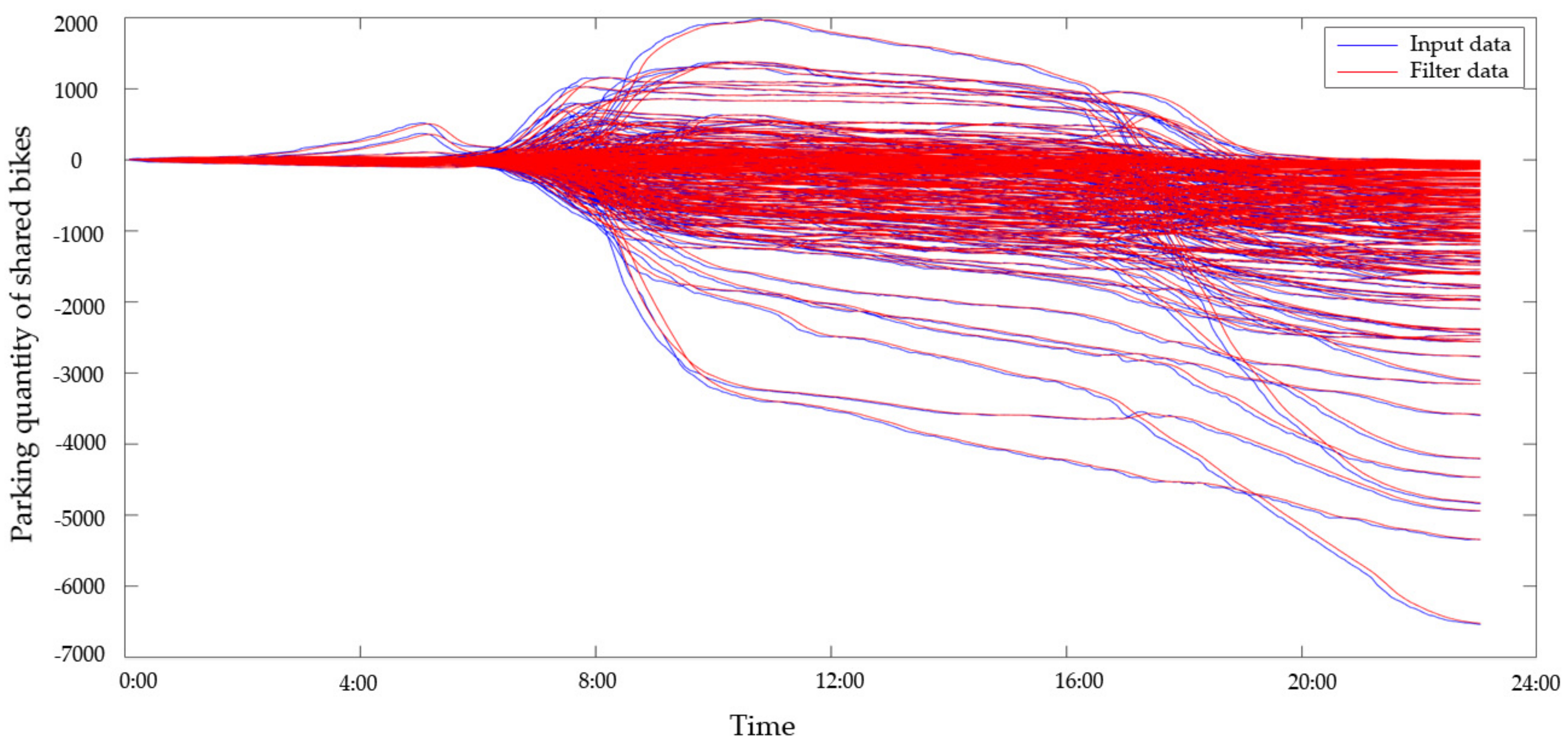
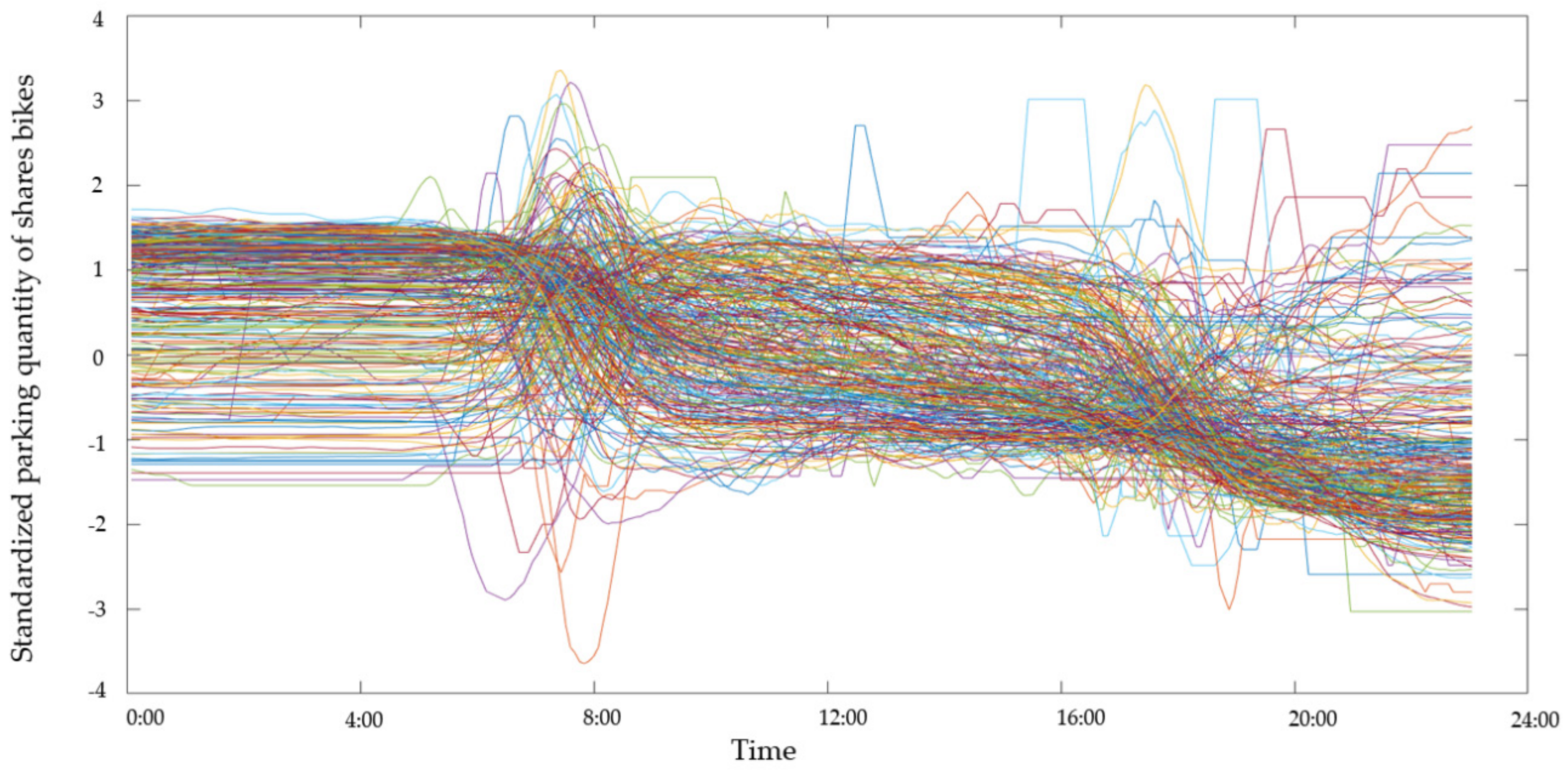

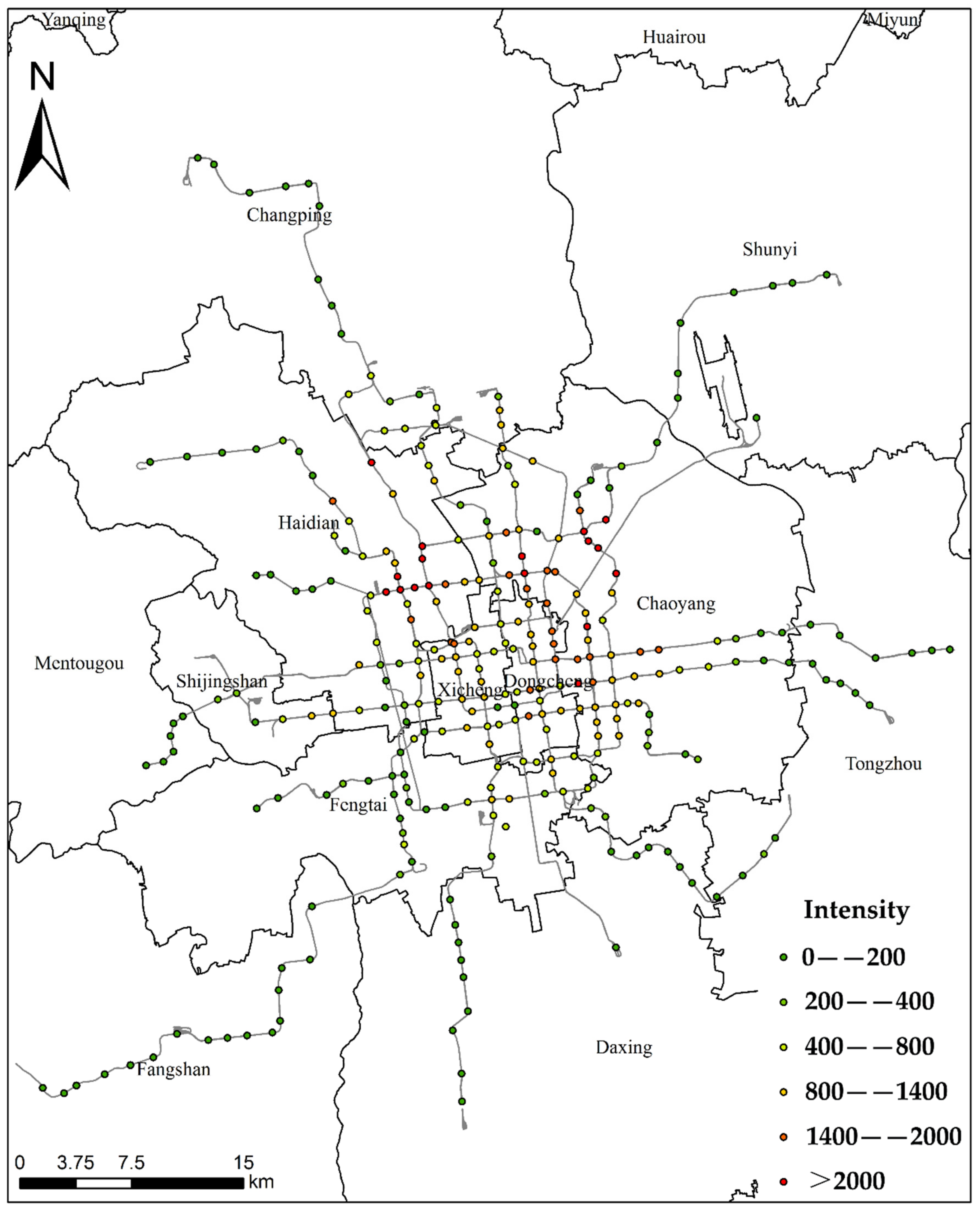
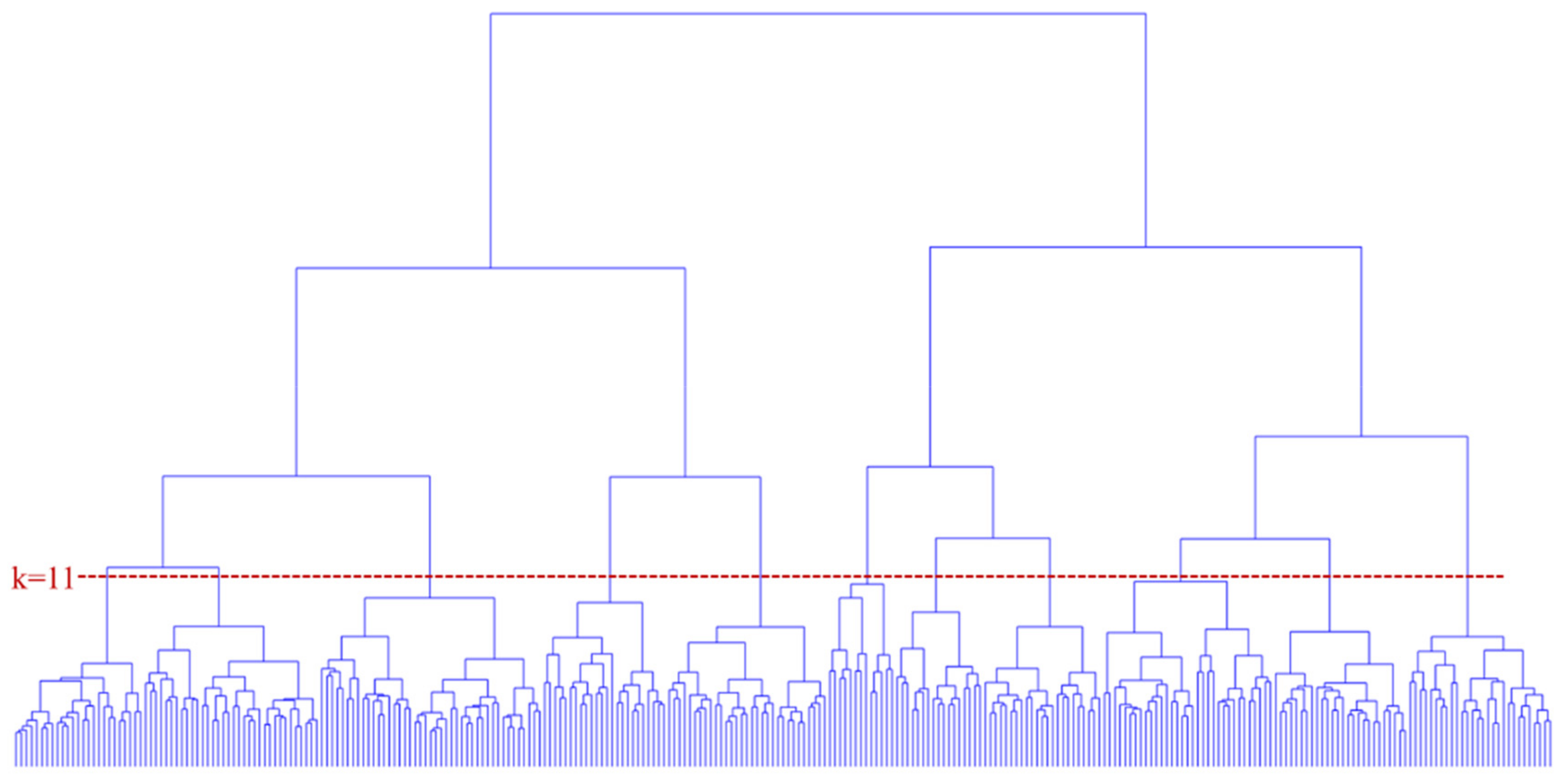
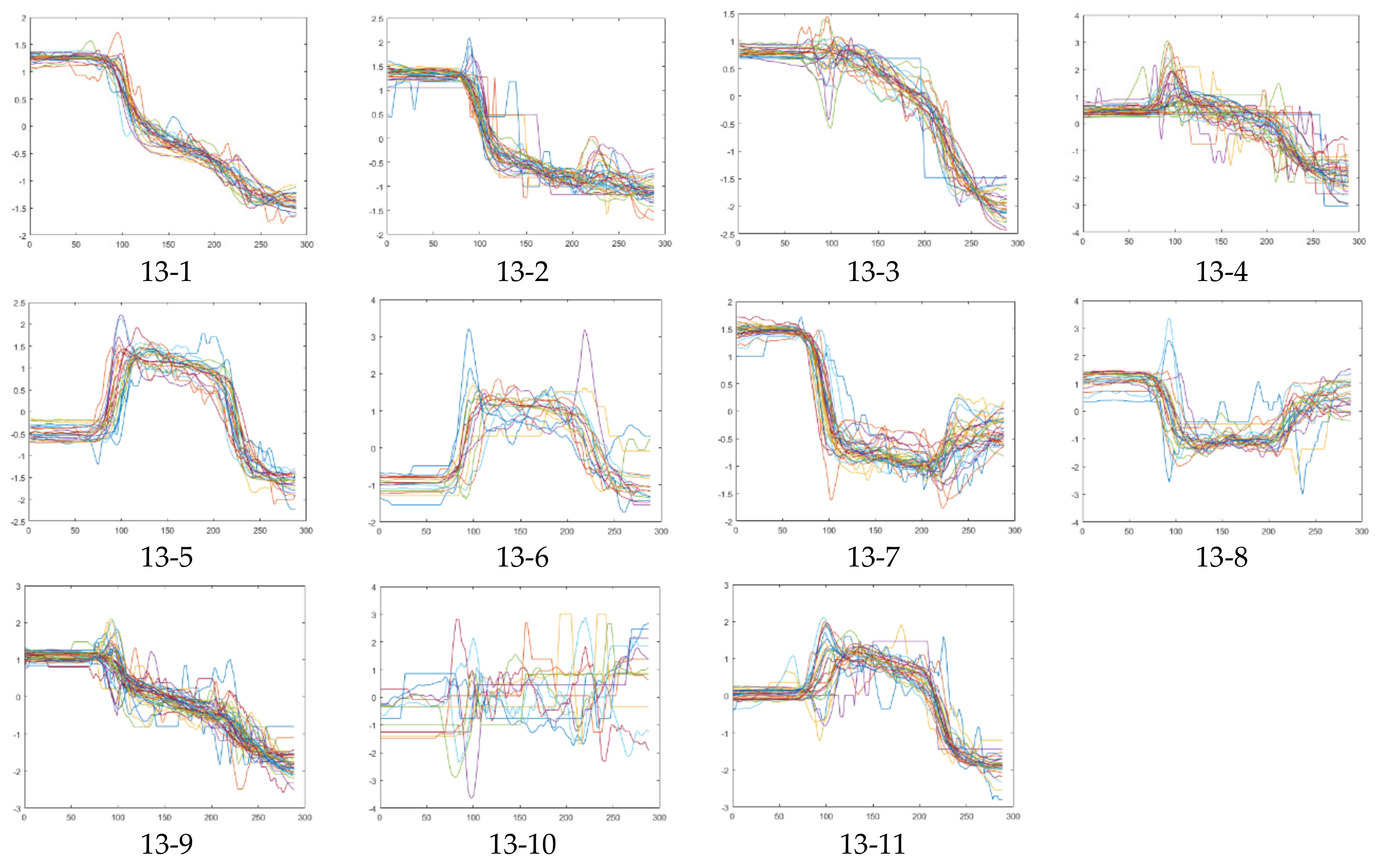


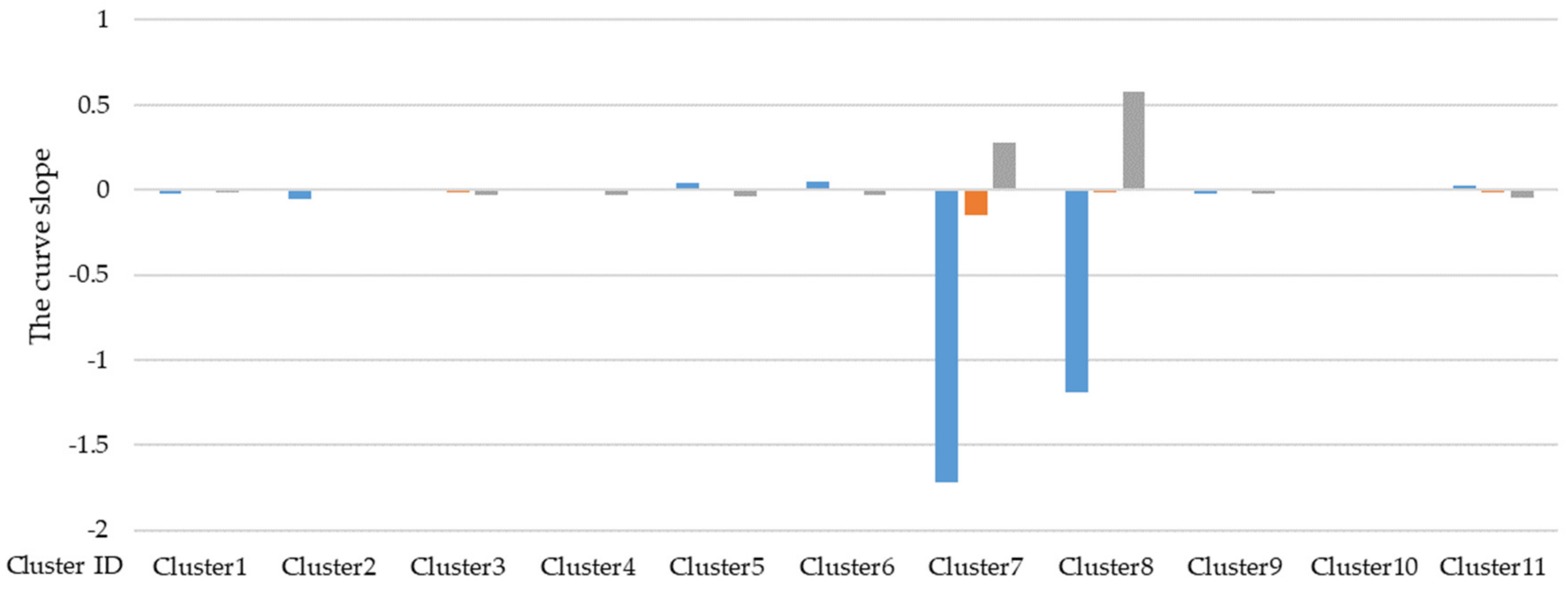
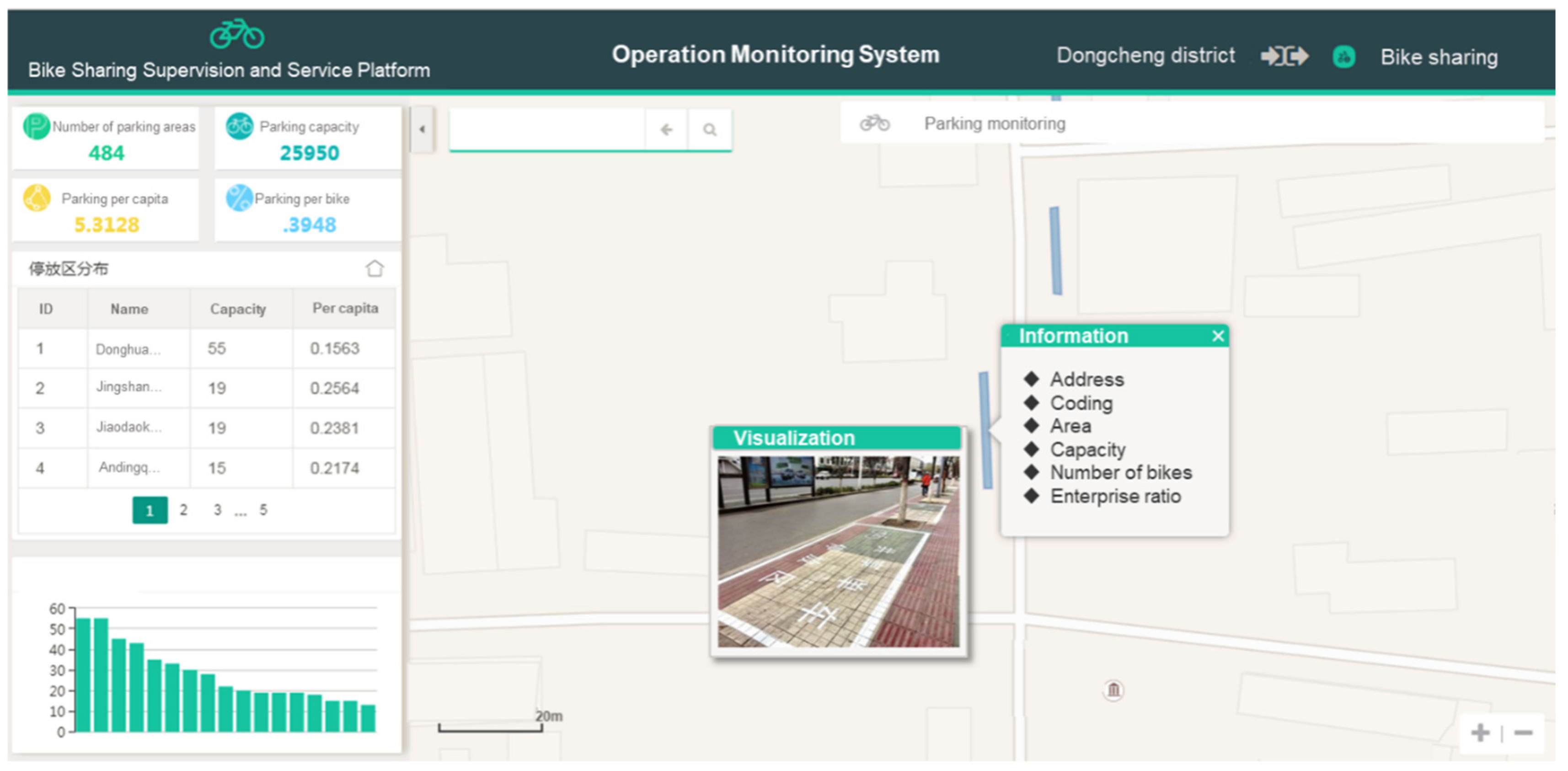
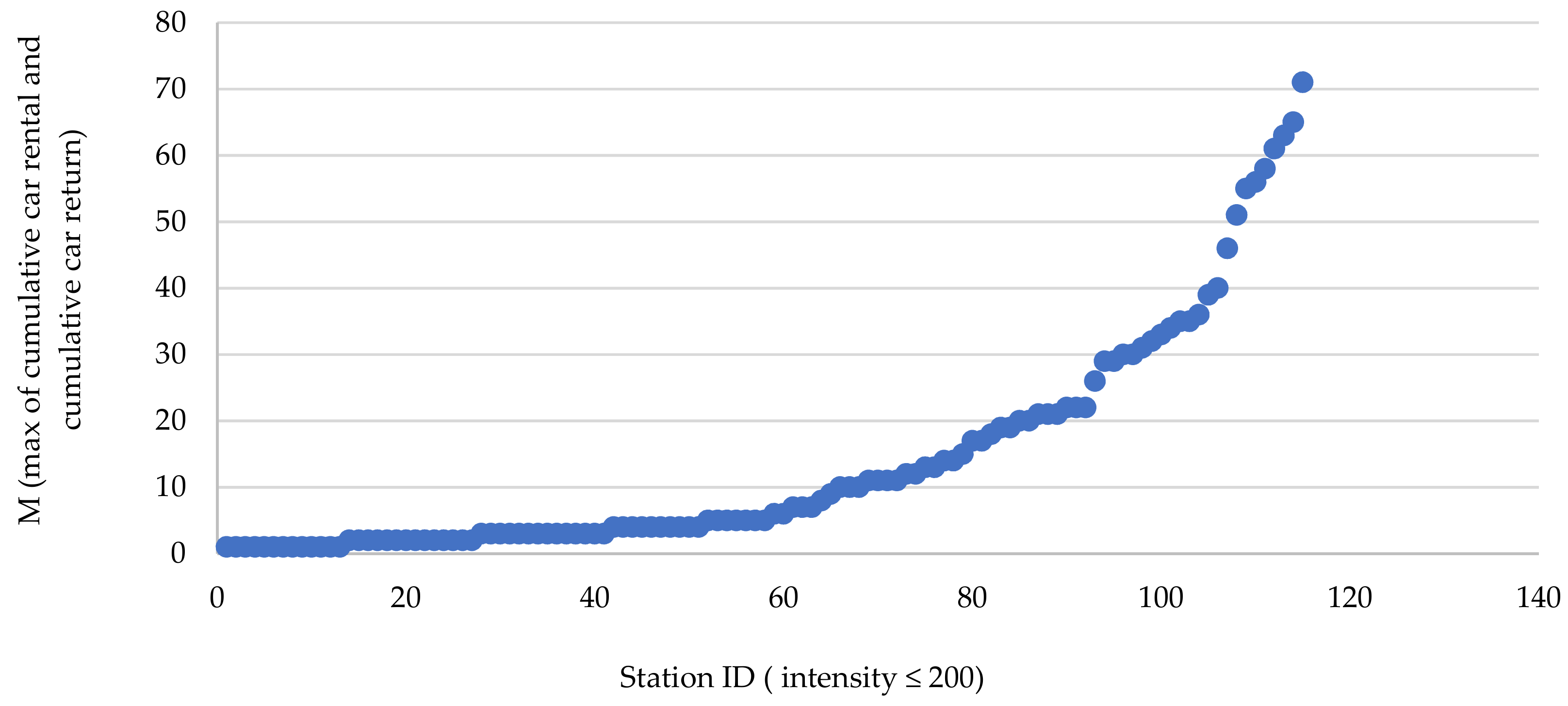

| Date | Time | Subway Station | Rent | Return |
|---|---|---|---|---|
| 20180601 | 201606010000-201806010005 | Dongsi station | 4 | 2 |
| 20180601 | 201606010005-201806010010 | Dongsi station | 1 | 5 |
| 20180601 | 201606010010-201806010015 | Dongsi station | 2 | 4 |
| 20180601 | 201606010015-201806010020 | Dongsi station | 2 | 4 |
| 20180601 | 201606010020-201806010025 | Dongsi station | 3 | 3 |
| 20180601 | 201606010025-201806010030 | Dongsi station | 3 | 2 |
| 20180601 | 201606010030-201806010035 | Dongsi station | 3 | 2 |
| 20180601 | 201606010035-201806010040 | Dongsi station | 3 | 2 |
| 20180601 | 201606010040-201806010045 | Dongsi station | 4 | 5 |
| 20180601 | 201606010045-201806010050 | Dongsi station | 1 | 2 |
| 20180601 | 201606010050-201806010055 | Dongsi station | 3 | 2 |
| 20180601 | 201606010055-201806010100 | Dongsi station | 1 | 3 |
| 20180601 | 201606010100-201806010105 | Dongsi station | 5 | 6 |
| Category | Clusters Covered in Category | Number of Stations |
|---|---|---|
| Continuous Descending | 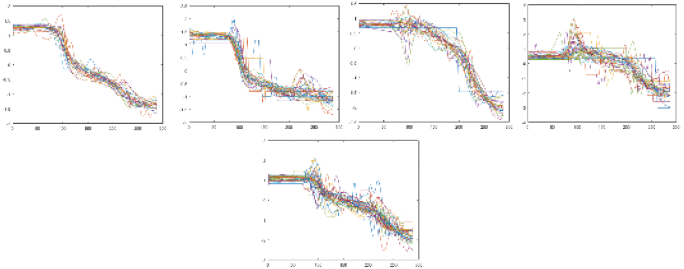 | 162 |
| Concave | 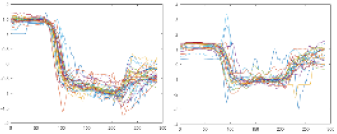 | 55 |
| Convex |  | 69 |
| Irregular | 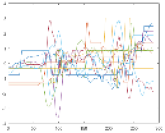 | 14 |
© 2019 by the authors. Licensee MDPI, Basel, Switzerland. This article is an open access article distributed under the terms and conditions of the Creative Commons Attribution (CC BY) license (http://creativecommons.org/licenses/by/4.0/).
Share and Cite
Xu, D.; Bian, Y.; Rong, J.; Wang, J.; Yin, B. Study on Clustering of Free-Floating Bike-Sharing Parking Time Series in Beijing Subway Stations. Sustainability 2019, 11, 5439. https://doi.org/10.3390/su11195439
Xu D, Bian Y, Rong J, Wang J, Yin B. Study on Clustering of Free-Floating Bike-Sharing Parking Time Series in Beijing Subway Stations. Sustainability. 2019; 11(19):5439. https://doi.org/10.3390/su11195439
Chicago/Turabian StyleXu, Dandan, Yang Bian, Jian Rong, Jiachuan Wang, and Baocai Yin. 2019. "Study on Clustering of Free-Floating Bike-Sharing Parking Time Series in Beijing Subway Stations" Sustainability 11, no. 19: 5439. https://doi.org/10.3390/su11195439




